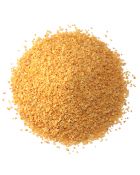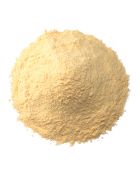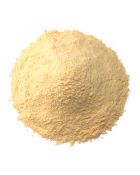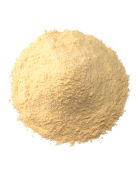Re-Imagined Supply Chains
Growing Responsibly: Sustainable California Garlic
“Is your product sustainable?” It’s one of the questions that has been top of mind for consumers and businesses. What does it mean to be sustainable in terms of food? It means better growing practices, sustainable packaging, sustainable supply chains, etc. So, how does sustainability work in the real world? Let’s explore.
Growing Responsibly
The concept of sustainability focuses on meeting our current needs without depleting natural resources so future generations are able to meet their needs as well. Here at Olam, we put sustainability at the core of our business.
Our corporate purpose drives us to re-imagine global agriculture and food systems by growing responsibly. We aim to create prosperous farmers and food systems, build thriving communities and re-generate the living world.
Sustainable California Garlic
In our California garlic supply chain, we work with growers who invest in new technologies to shape the future of the industry and partner with leading environmental organizations to incorporate regenerative practices on their farms.
“I've been able to look at different agricultural systems throughout Asia, South America and Europe and when I come home from a trip like that, I realize what a fantastic production system we have. Our standards, reporting and use of crop protection products are second to none,” said Don Cameron, Vice President of Terranova Farms in Helm, California.
“Our food safety, the programs we have in place here — there’s nothing like it in the world. I would much rather eat garlic grown in the US, specifically California, than anywhere else in the world,” added Cameron.
Impacts in 2019, from 4 of our 28 partner farms include:
- Biodiversity: 1,544 acres of managed wetlands and 284 acres of native habitat, including 18 acres of milkweed grown providing habitat for the endangered monarch butterfly
- Soil Health: 2,310 acres of cover crops
- Renewable Energy: 6 megawatts of solar
- Water Stewardship: The ability to recharge over 1,000 acre-feet of floodwater per day and an average of 80% drip irrigation used across all crops resulting in 15-30% water savings
Re-Imagined Supply Chains
“If you can’t measure it you can’t improve it. Olam’s crop managers work closely with our growers to track the type and application of pesticides and fertilizers, along with practices that affect healthy soils and improve water quality and quantity,” said Claire Loudis, Olam Spices’ Sustainability Manager.
With the help of AtSource, Olam’s sustainability platform, we are able to track, not only the product’s journey from field to the finished product delivered to your door, but also social and environmental footprints — which are generated and transparently reported by our teams on the ground.
Garlic in Other Origins
We believe all garlic supply chains should ideally have the same standards of sustainability, for the overall long-term improvement of the industry. However, that is certainly not the case. For instance in China, where 80% of the world’s garlic comes from, garlic is sourced from millions of individual farmers, whose growing conditions starkly contrast California garlic fields.
While China is the third largest country in the world, making up 6.3% of the land mass, only 10% of it is suitable for cultivation. Of that small percentage, more than half is unirrigated and in many areas environmental problems such as floods, drought and erosion pose serious threats.
Studies in recent years have also found that soils in 53% of the provinces were moderately to heavily polluted, mainly by waste gas, wastewater and hazardous residuals from factories and agricultural inputs such as pesticides. These factors have been largely driven by China’s rapid economic and technological advancements but present significant public and ecological health risks.
As there is often no ability to trace the garlic back to the field or farmer in China (due to being sourced by millions of individual farmers), it is very rare for buyers to know the history of the garlic they are purchasing. Usually, there is no record of pesticide usage, chemicals applied or sustainability measures taken.
When you’re looking for the safest, most flavorful garlic in the world with un-matched traceability, that’s sustainably farmed and grown with the knowledge and desire to cultivate products in harmony with nature, look no further than Olam’s California garlic.




